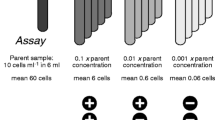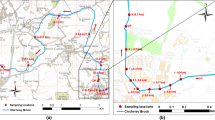Abstract
Ballast water is the main vector for marine invasions. To minimize the spread of invasive species, the International Maritime Organization (IMO) has adopted the Ballast Water Management Convention which requires the installation of shipboard ballast water treatment systems (BWTS). During BWTS tests, the phytoplankton abundance and species composition were followed after treatment with both filtration and ultraviolet radiation. Although the installation fulfilled the IMO criteria after a 5-day holding time in a model ballast tank, the ultimate effectiveness of the treatment was further tested in long-term (20 days) incubation experiments under optimal phytoplankton growth conditions. Application of flow cytometry, microscopy, and DNA sequencing to these incubation samples gave an indication of the phytoplankton species that might be introduced by ballast water discharge—despite treatment. Phytoplankton was reliably quantified using flow cytometry, while fast identification was best done using microscopy. Some groups that contained potentially toxic species could not be identified at species level using microscopy; for these species, identification using genetic techniques was necessary. It is concluded that if long-term incubation experiments are used as an additional tool in testing BWTS effectiveness, a combination of phytoplankton screening methods can be applied depending on the detail of information that is required.


Similar content being viewed by others
References
Amato A, Kooistra WHCF, Ghiron JHL, Mann DG, Proschold T, Montresor M (2007) Reproductive isolation among sympatric cryptic species in marine diatoms. Protist 158:193–207
Bornet B, Antoine E, Bardouil M, Marcaillou-Le Baut C (2004) ISSR as new markers for genetic characterization and evaluation of relationships among phytoplankton. J Appl Phycol 16:285–290
Cadee GC (1986) Recurrent and changing seasonal patterns in phytoplankton of the westernmost inlet of the Dutch Wadden Sea from 1969 to 1985. Mar Biol 93:281–289
Connelly NA, O’Neill CRJ, Knuth BA, Brown TL (2007) Economic impacts of zebra mussels on drinking water treatment and electric power generation facilities. Env Manag 40:105–112
Gollasch S (2006) Overview on introduced aquatic species in European navigational and adjacent waters. Helgoland Mar Res 60:84–89
Gregg M, Rigby G, Hallegraeff GM (2009) Review of two decades of progress in the development of management options for reducing or eradicating phytoplankton, zooplankton and bacteria in ship’s ballast water. Aquat Invas 4:521–565
Hofstraat JW, Van Zeijl WJM, De Vreeze MEJ, Peeters JCH, Peperzak L, Colijn F, Rademaker TWM (1994) Phytoplankton monitoring by flow cytometry. J Plankton Res 16:1197–1224
Hoppenrath M, Elbrachter M, Drebes G (2009) Marine phytoplankton: selected microphytoplankton species from the North Sea around Helgoland and Sylt. Schweizerbart, Stuttgart, 264
Ivanov VP, Kamakin AM, Ushivtzev VB, Shiganova T, Zhukova O, Aladin N, Wilson SI, Harbison GR, Dumont HJ (2000) Invasion of the Caspian Sea by the comb jellyfish Mnemiopsis leidyi (Ctenophora). Biol Invas 2:255–258
Keesing F, Belden LK, Daszak P, Dobson A, Harvell CD, Holt RD, Hudson P, Jolles A, Jones KE, Mitchell CE, Myers SS, Bogich T, Ostfeld RS (2010) Impacts of biodiversity on the emergence and transmission of infectious diseases. Nature 468:647–652
Klein G, MacIntosh K, Kaczmarska I, Ehrman JM (2010) Diatom survivorship in ballast water during trans-Pacific crossings. Biol Invas 12:1031–1044
Kooistra WHCF, Sarno D, Balzano S, Gu H, Andersen RA, Zingone A (2008) Global diversity and biogeography of Skeletonema species (Bacillariophyta). Protist 159:177–193
Levine JM (2008) Biological invasions. Current Biol 18:R57–R60
Liebich V, Stehouwer PP, Veldhuis M (2012) Re-growth of potential invasive phytoplankton following UV-based ballast water treatment. Aquat Invas 7:29–36
Ludwig W, Strunk O, Westram R, Richter L, Meier H, Yadhukumar BA, Lai T, Steppi S, Jobb G, Förster W, Brettske I, Gerber S, Ginhart AW, Gross O, Grumann S, Hermann S, Jost R, König A, Liss T, Lüßmann R, May M, Nonhoff B, Reichel B, Strehlow R, Stamatakis A, Stuckmann N, Vilbig A, Lenke M, Ludwig T, Bode A, Schleifer KH (2004) ARB: a software environment for sequence data. Nucl Acid Res 32:1363–1371
Mackie GL (1991) Biology of the exotic zebra mussel, Dreissena polymorpha, in relation to local bivalves and its potential impact in Lake St. Claire. Hydrobiologia 219:251–268
Molnar JL, Gamboa RL, Revenga C, Spalding MD (2008) Assessing the global threat of invasive species to marine biodiversity. Front Ecol Environ 6:485–492
Monfort P, Baleux B (1992) Comparison of flow cytometry and epifluorescence microscopy for counting bacteria in aquatic ecosystems. Cytometry 13:188–192
Moniz MBJ, Kaczmarska I (2009) Barcoding diatoms: is there a good marker? Molec Ecol Res 9:65–74
Muyzer G, De Waal EC, Uitterlinden AG (1993) Profiling of complex microbial populations by denaturating gradient gel electrophoresis analysis of polymerase chain-reaction amplified genes coding for 16S rRNA. Appl Env Microbiol 59:695–700
Nübel U, Garcia-Pichel F, Muyzer G (1997) PCR primers to amplify 16s rRNA genes from Cyanobacteria. Appl Env Microbiol 63:3327–3332
Park JS, Lee JH (2010) A study on the fine structure of marine diatoms in Korean coastal waters: Genus Thalassiosira 5. Algae 25:121–131
Peperzak L, Vrieling EG, Sandee B, Rutten T (2000) Immuno flow cytometry in marine phytoplankton research. Scient Mar 64:165–181
Pruesse E, Quast C, Knittel K, Fuchs BM, Ludwig W, Peplies J, Glöckner FO (2007) SILVA: a comprehensive online resource for quality checked and aligned ribosomal RNA sequence data compatible with ARB. Nucl Acids Res 35:7188–7196
Sarno D, Kooistra WHCF, Medlin LK, Percopo I, Zingone A (2005) Diversity in the genus Skeletonema (Bacillariophyceae). II. An assessment of the taxonomy of S. costatum-like species with the description of four new species. J Phycol 41:151–176
Scholin C, Vrieling E, Peperzak L, Rhodes L, Rublee P (2003) Detection of HAB species using lectin, antibody and DNA probes. In: Hallegraeff GM, Anderson DM, Cembella AD (eds) Manual on harmful marine microalgae. Monographs on Oceanographic Methodology, vol 11. pp 131–163
Scholin CA, Anderson DM (1998) Detection and quantification of HAB species using antibody and DNA probes: progress to date and future research objectives. In: Regura B, Blanko J, Fernandez ML, Wyatt T (eds) Harmful algae. Xunta de Galicia and Intergovernmental Oceanographic Commission of UNESCO, pp 253–257
Shiganova TA (2002) Invasion of the Black Sea by the Ctenophore Mnemiopsis leidyi and recent changes in pelagic community structure. Fish Oceanogr 7:305–310
Shiganova TA, Mirzoyan ZA, Studenikina EA, Volovik SP, Siokou-Frangou I, Zervoudaki S, Christou ED, Skirta AY, Dumont HJ (2001) Population development of the invader ctenophore Mnemiopsis leidyi, in the Black Sea and other seas of the Mediterranean basin. Mar Biol 139:431–445
Sieracki CK, Sieracki ME, Yentsch CS (1998) An imaging-in-flow system for automated analysis of marine microplankton. Mar Ecol Prog Ser 168:285–296
Simon N, LeBot N, Marie D, Partensky F, Vaulot D (1995) Fluorescent in situ hybridization with rRNA-targeted oligonucleotide probes to identify small phytoplankton by flow cytometry. Appl Env Microbiol 61:2506–2513
Stehouwer PPV, Fuhr F, Veldhuis MJW (2010) A novel approach to determine ballast water vitality and viability after treatment. In: Bellefontaine N, Haag F, Lindén O, Matheickal J (eds) Emerging Ballast Water Management Systems, Malmö, Sweden, 26–29 January 2010. World Maritime University, pp 233–240
Takabayashi M, Lew K, Johnson A, Marchi A, Dugdale R, Wilkerson FP (2006) The effect of nutrient availability and temperature on chain length of the diatom, Skeletonema costatum. J Plankton Res 28:831–840
Tsolaki E, Diamadopoulos E (2010) Technologies for ballast water treatment: a review. J Chem Technol Biot 85:19–32
Veldhuis MJW, Kraay GW (2000) Application of flow cytometry in marine phytoplankton research: current applications and future perspectives. Scient Mar 64:121–134
Acknowledgments
The authors thank Dr. Judith van Bleijswijk and Julie Ogier for their help with the DNA analysis and Thomas Rutten for his help with the Easyclus© analysis. This work has been co-funded by the North Sea Region Programme under the ERDF of the European Union.
Author information
Authors and Affiliations
Corresponding author
Rights and permissions
About this article
Cite this article
Stehouwer, P.P., Liebich, V. & Peperzak, L. Flow cytometry, microscopy, and DNA analysis as complementary phytoplankton screening methods in ballast water treatment studies. J Appl Phycol 25, 1047–1053 (2013). https://doi.org/10.1007/s10811-012-9944-8
Received:
Revised:
Accepted:
Published:
Issue Date:
DOI: https://doi.org/10.1007/s10811-012-9944-8




